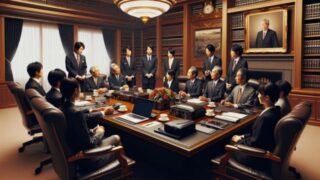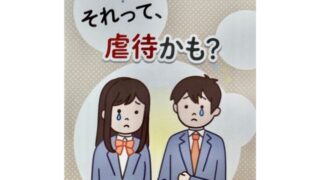How hatred was created and directed against a religious minority is a textbook example of “mob psychology.”
by Massimo Introvigne
Article 5 of 7. Read article 1, article 2, article 3, and article 4.


In 1895, French anthropologist Gustave Le Bon published what will become an immensely influential book, “The Crowd.” While not without its academic critics, it will be studied by Lenin, Hitler, and Mussolini—who all admitted they found in the book a source of inspiration. Le Bon established a new science, which he called the “psychology of the crowds.” However, most of the crowds he described were bent on socially destructive action, and in contemporary English would rather be called “mobs.”
Le Bon described three stages of the process creating a mob. The first is suggestion. He believed that citizens of modern societies are easily influenced and manipulated by the media and propaganda, a prophetic comment considering that he wrote well before television and the Internet. The second stage is contagion. In these days of epidemic, we are all well aware that a virus spreads invisibly but unstoppably. The same, Le Bon noted, happens with myths and disinformation, what we would today call fake news.


Le Bon’s third stage was anonymity. Individuals in a mob may not know each other, yet they exhibit the same behavior and seem to be governed by a “group mind,” which like a malignant spider at the center of an invisible web directs their actions. Acting anonymously, but knowing millions are doing what they do at the same time, those in a mob believe they do not have a personal responsibility, and experience an intoxicating feeling of invincibility.
Le Bon’s book is surprisingly modern, and might have been written having contemporary social media in mind. Protected by anonymity, millions of self-styled warriors in mob-like cyberwars insult their targets believing they can escape liability, and feeling they are anonymous soldiers in an invincible army.
After the assassination of former Prime Minister Shinzo Abe, Japan is witnessing a textbook example of how a mob is created through suggestion, contagion, and anonymity. The assassin claimed he wanted to punish Abe because the former Prime Minister had attended events of an organization connected with the Unification Church/Family Federation. The killer believed his mother had been ruined by her excessive donations to that Church, of which she is a member.
What happened is clear. There is a culprit, Abe’s killer, and there are victims, Abe himself and the Unification Church, whose leader the assassin also planned to kill. Yet, mob psychology works independently of logic and facts.


Mobs are not created spontaneously. The Unification Church in Japan has powerful opponents, and they spread suggestion to the media, manipulating many into believing that, rather than a victim, the Church was somewhat responsible for Abe’s death. Contagion spread the suggestion, and an anonymous mob was formed, where individuals not knowing each other followed a group mind, insulted, threatened, and in some cases committed crimes, feeling protected by being part of a crowd or by hiding behind their phones or computers.
From Abe’s assassination to August 20, the Unification Church in Japan had documented some 150 hate incidents. But they continue, and the number is probably higher, since insults and threats to individual Church members are not necessarily reported to the headquarters.
Examining the documents of these cases makes for alarming reading. It shows how easily and quickly mobs are created today, with a technology that did not exist in Le Bon’s time. Many of those who placed threatening phone calls, which were recorded, to the headquarters or branches of the Family Federation, started with sentences such as “I read the media” or “I watched TV.” Through the typical process of mob psychology, they believed what they heard, persuaded that the media by definition “tell the truth.” Not only did they believe they had become instant “experts” on the Unification Church, they also felt ready to “do something” and take the law into their own hands.
Because they had read it or heard it on TV, they believed they knew, and shouted at the phone or wrote on the Internet, that the Unification Church “killed Abe”—who was in fact killed by a fanatical opponent of that Church—, “uses brainwashing”—a notion discredited as pseudo-science long ago by mainline scholars of new religious movements—and “commits crimes.”
There is also a disturbing racist undertone in several phone calls and comments: “You are Koreans, go back to Korea,” “We know, Koreans are only interested in money,” “You are a Korean anti-Japanese group.” While the Unification Church was founded by Koreans, members in Japan are overwhelmingly Japanese.
Just as Le Bon predicted, anonymity and the toxic feeling of not being responsible, increasingly lead those in this mob to commit crimes. On July 17, somebody posted in an electronic bulletin board “Tomorrow morning I will come to your headquarters and kill all with a knife.” Death threats were received by Unification Church branches in Aichi, Hokkaido, and Osaka. In Nara, threats to kill the pastors reported to the police led to the precautionary closure of the local church.


In Tokyo, Nara, and Osaka, sound trucks cruised around the churches and shouted hostile slogans. Some were operated by right-wing extremists, who in Osaka on August 4 screamed “Korean anti-Japanese group, go out of Japan!”
In Aichi, on August 15, the church’s mailbox was painted black, and graffiti hailing Abe’s killer were spray-painted.


To fully understand the danger of all this, we need to go back to Le Bon. One or two isolated incidents may be dismissed as minor, although it is always possible that death threats escalate into actual violence. One hundred or more incidents demonstrate that a mob of anonymous self-appointed vigilantes is now at work. They are unknown to each other but are all manipulated by the malignant spider at the center of the web—a spider that hates, slanders, discriminates, and may one day kill.








